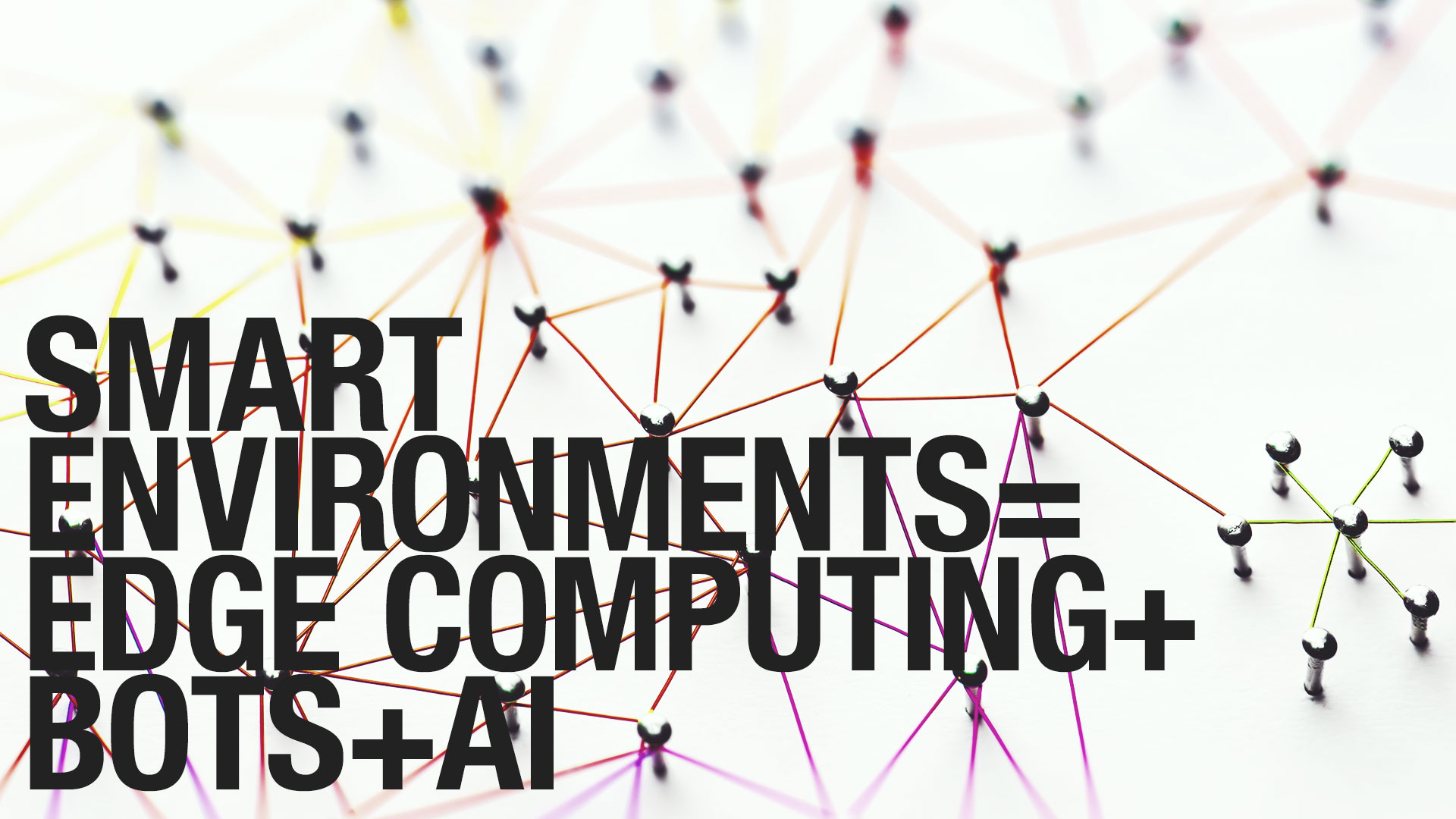The concept of smart environments can regarded as byproduct of pervasive computing with a strong focus on the interaction of humans and technology. Generally speaking, a smart environment is
a physical world that is richly and invisibly interwoven with sensors, actuators, displays, and computational elements, embedded seamlessly in the everyday objects of our lives, and connected through a continuous network. [1].
Edge Computing is a recent development in distributed computing and basically pushes computation to the network edges rather than relying on centralized remote clouds that do all the computations. This distribution has a number of benefits, like fault tolerance, encapsulation of failures or low message latency. These characteristics makes edge computing the ideal infrastructure candidate for smart environments where we need a robust infrastructure that provides the means for seamless interaction with users and their mobile devices.
Bots and conversational interfaces have taken over many areas where user use all kinds of services: booking a hotel, looking for a flight, taxi, getting legal support, making a reservation in restaurant, a getting help in software etc. are implemented as bots, conversational interfaces, respectively. With conversational interfaces computer systems are finally adapting to the way humans interact and not vice versa. This way of interacting fits nicely to smart environments. Figuratively speaking – you can literally talk to a wall and it will react to your commands, given it has the necessary hardware build in, i.e., screens, microphones and other actuators. The invisible “star trek computer” that awaits commands and provides services has become a reality.
Interacting in smart environments – using either written or spoken natural language – requires some kind of “intelligence” for the interface to understand the commands of users. Local AIs, i.e., AIs deployed at Edge devices with Conversational Interfaces are the third component of smart environments. AI makes the environment smart and provides users with meaningful information and services [2].
Ladies and gentlemen, the smart environment is here – it’s just not yet evenly distributed.
[1] http://www.cs.cmu.edu/~jasonh/courses/ubicomp-sp2007/papers/03-weiser-origins.pdf
[2] http://www.solomon.network
